“Underneath all our conditioning, hidden in the crypt of our being, near the waters of life, the Black Virgin is enthroned with her Child, the dark latency of our own essential nature, that which we were always meant to be.”
Ean Begg, “The Cult of the Black Virgin”
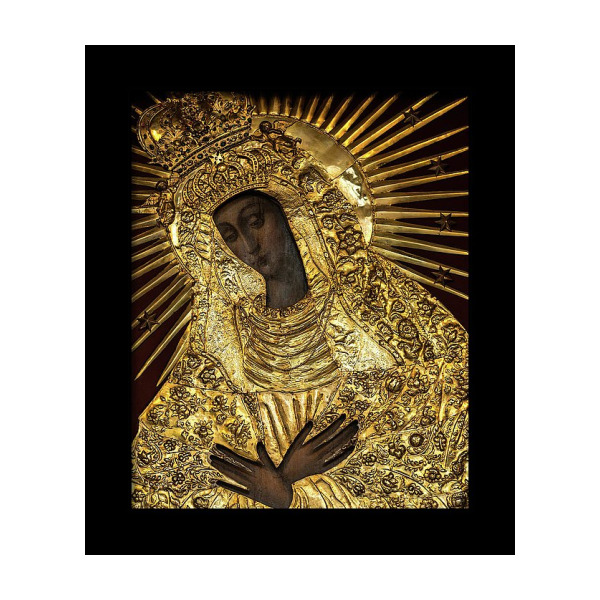
The Black Madonna of Vilnius
Our world needs the dark goddess. We live in yang, daytime culture, which values above all a clear sense of purpose, logical solutions, single-minded focus and clear-cut distinctions. With the ever-increasing light pollution, we have lost touch with the dark sky and the dark earth. Most of humanity still live under the cultural spell of monotheistic religions, which deny divinity to the feminine. The patriarchal monotheism of Judaism and Christianity, symbolically reduced women “to nothing but mute matter, a mere body;” (1) the body which is portrayed as an instrument of devilish temptation, rather than a sacred conduit of divine wisdom. The word “sacred” itself does not stir any emotion in most; locked away in churches, it sounds abstract and irrelevant.
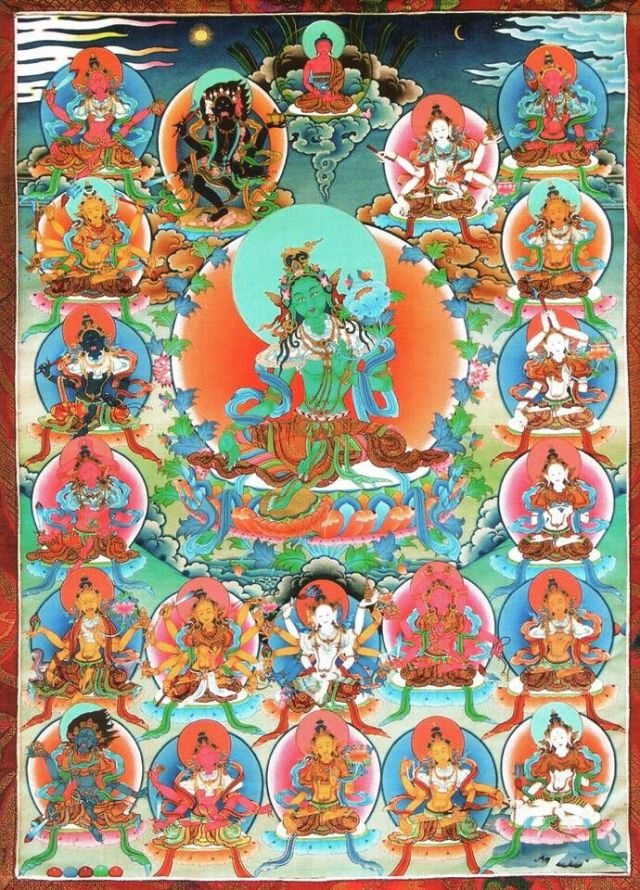
Twenty-one Taras
No wonder that the collective shadow is so palpable, the divisions and conflicts so stark, with the most primitive emotions brewing under the lid. The archetype of the dark goddess – the Black Madonna in her multi-hued robes (see the Black Madonna of Einsideln below), her skin brown, black or reddish, the twenty-one aspects of Tara in the whole array of colours ranging from white to black – is waiting to bring awakening and liberation. In our times the Saviour will be feminine – the Sanskrit name Tara, which in Tibet is Drolma, means “a female who liberates,” the Female Buddha. The Dalai-lama assures that the Madonna, especially the Black one, is her avatar in the West. Though officially Madonna’s status is nowhere near as high as that of Tara in Buddhism, the devotion and adoration that she attracts persists despite the reticent attitude of the church. The church fathers have always striven to put her in a low and humble place. They say she is nothing but a mediator between the faithful and God; she can at best plead our case to the masculine Godhead.
I was recently at an exhibition devoted to the Black Madonna in Einsiedeln, Switzerland, organized by the monastery. Two assertions of the devout curators caught my attention: firstly, they said, we must realize that the whole cult of the Black Madonna should centre on Jesus because he is far more important than her; secondly, her blackness is irrelevant, being merely a result of the exposition to candle smoke or age-old dirt.
The orthodox narrative sounds quite defensive, which suggests that Her growing power stirs fear. “I long to liberate Mary from the Catholic Church,” (2) writes China Galland in her jewel of a book, in which she traces the archetype of the Dark Mother through Tibet, Switzerland, France and Poland. Like her, I too was born Catholic in a home with images of the Polish Black Madonna adorning the walls. Like her, I have since left the faith, yet I have never left the Black Madonna. Looking at her likenesses, be it paintings or statues, I always wondered at how luminous they seemed, despite being black. China Galland illumined the etymology of the word “black” to me, which, astonishingly enough, comes from the Greek word phlegein, which means “to burn,” possessing at its root words such as “to shine,” and “to flash.” Hers is the radiant black of the truth, affirms Galland, reminding us that in Tibetan Buddhism black is the colour that comes just before enlightenment. This blackness is the emptiness (shunyata) of the womb, it is Tara the Liberator, who, like Mary, was born as a mortal woman. Her name was Yeshe Dawa, which means Wisdom Moon. Seeing her specialness, the monks were lamenting that she was not a man, because in that case she would reach enlightenment quicker. They were expressing the views of the conservative Tibetan monastic tradition. Wisdom Moon’s response was to make a vow:
“I will remain in the woman’s form until reaching enlightenment and thus I will turn the wheel of Dharma, working for the benefit of all living beings, until the world of samsara is empty and all suffering ended.” (3)
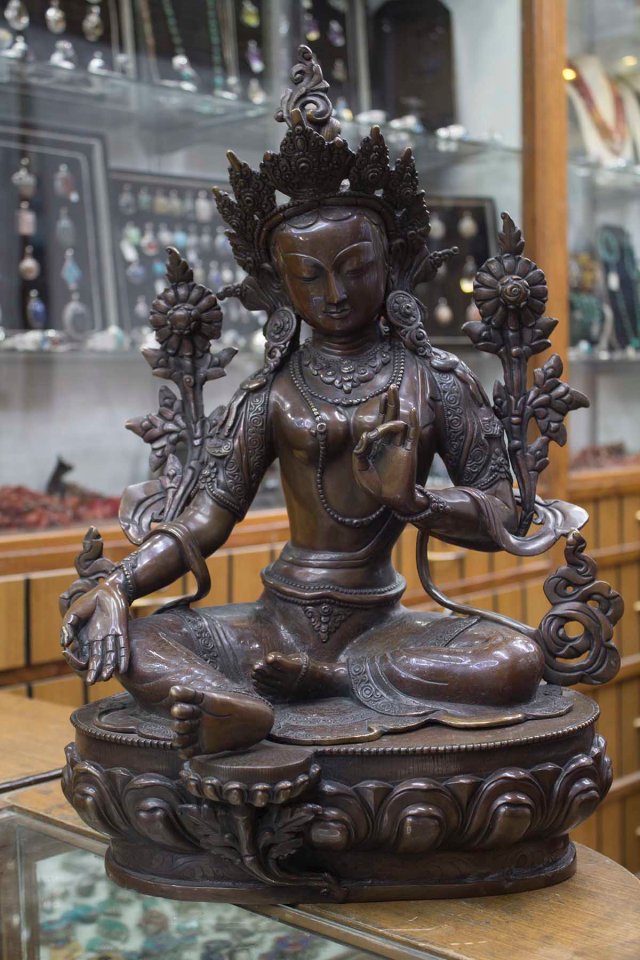
The Green Tara
Buddha Shakyamuni would not have reached enlightenment if he had not taken refuge in Tara.
It seems that within every religious or spiritual tradition there are two currents: the exoteric, official one, and the most conservative, and a hidden esoteric one, which carries revolutionary ideas; these ideas feel threatening to the mainstream. Christianity is much more opposed to female leadership, not to mention female divinity, than most Eastern spiritual traditions. But in the alternative Christian wisdom, such as Gnosticism, Jesus is portrayed as treating men and women as equals when it comes to their ability to absorb his teachings. Gnostic Gospels reveal that Mary Magdalene was his most prominent disciple, which was objected to by Saint Peter the Apostle. Ean Begg claims that even in orthodox verses the hidden truths can be fathomed. He analyzes the Litany of Loreto, in which Mary is called on (among others) as Mirror of Justice, Seat of Wisdom, Spiritual Vessel, Mystical Rose, Gate of Heaven, Morning Star, Tower of David and Tower of Ivory. (4) Tower of Ivory is a reference to the Song of Songs and the beauty of the neck of the Black Shulamite. When ivory is “calcined in a closed vessel, …, it yields a fine soft pigment from which the shiny ivory-black paint is made.” (5) While it is fairly obvious that the Tower of David can only be “Jerusalem, home of the Temple,” the Greek word for ivory – elephantinos, invokes the Egyptian city of Elephantiné, connected with Gnosticism. Begg muses:
“… what we see are the church of Peter, catholic, orthodox, male dominated and victorious, and the rival church of Mary, Gnostic and heretical, worshipping a male/female deity and served by priests of both sexes.” (6)
Not only does Black Madonna connect to Mary Magdalene, but her roots go deeper and further back in time. Pagan goddesses, especially Isis, Artemis of Ephesus and Cybele are considered her precursors. She can also be traced back to earth goddesses as well as Inanna and Lilith. Black was the colour in which goddesses of fertility were traditionally depicted. As a matter of fact, black Madonnas are frequently implored in matters related to fertility.(7) We see the Black Madonna in the famous statue of Artemis of Ephesus, which
“… shows her with black face, hands and feet, multiple breasts, on her head a mural crown or tower, and on her dress images including bulls, goats, deer and a bee.(8)

Artemis of Ephesus
France is the country with the largest number of Black Madonna likenesses in the whole world. Black Madonnas found there frequently come from a lineage of dark pagan goddesses, for example the cult of the Black Madonna of Marseilles replaced the cult of Artemis of Ephesus, which was vibrant in the city, thanks to the Greek colonists from Phocaea, who had brought her there. Lyons was the city of Cybele right to the 3rd century AD. Cybele, the Phrygian mother goddess, was originally worshipped as a black meteorite stone. Begg writes:
” Her name is etymologically linked with the words for crypt, cave, head, and dome, and is distantly related to the Ka’aba, the cube-shaped holy of holies in Mecca that contains the feminine black stone venerated by Islam.”

Cybele in a chariot drawn by lions
Another fascinating French example is the Black Madonna of Chartres, which before the advent of Christianity was the centre of Druid worship. The cathedral of Chartres, which has two Black Madonnas, one of which was whitened in a recent restoration, was erected on a sacred Druidic place, most probably a burial mound. The first Black Madonna is housed in the main church and is now white, while the second, The Black Madonna of the underground, is located in the crypt and is still black. The connection of the Black Madonna with death and the underworld is quite notable. Another outstanding example is the Black Virgin of Mont-Saint-Michel, which used to be called Mount Tomb, since it was another Neolithic burial site. The dark goddess has always been venerated as the dark earth and the night from which all life arises and into which it vanishes. The chapel of the Black Madonna of Einsideln in Switzerland was constructed directly above the martyred hermit Meinrad’s cell, whose skull is buried beneath her feet. Saxena links this fact with Mary Magdalene and Tantric Buddhism:
“…most famous paintings of Mary Magdalene present her with a skull which connects her with the Tantric traditions that focus on meditating on death and connects her directly with the Black Madonna.” (9)
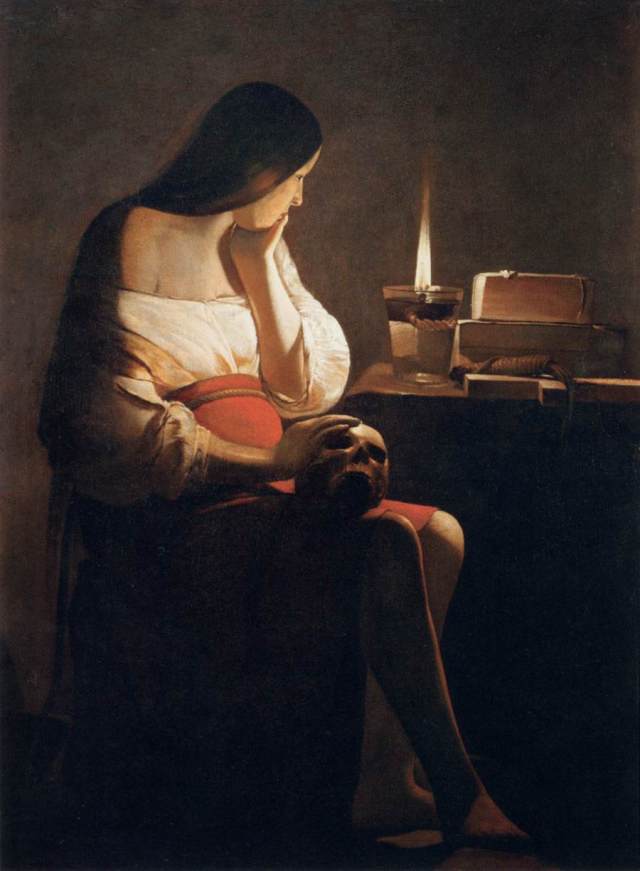
Georges de la Tour, “Magdalene with the Smoking Flame”
But the most powerful of all pagan goddesses worshipped in France was Isis, who was “the true goddess of France,” as Begg notes. She was the true universal goddess, who said in The Golden Ass of Apuleius:
“I am Nature, the universal Mother, mistress of all the elements, primordial child of time, sovereign of all things spiritual, queen of the dead, queen also of the immortals, the single manifestation of all gods and goddesses that are. … Though I am worshipped in many aspects, known by countless names, and propitiated with all manner of different rites, yet the whole round earth venerates me. The primeval Phrygians call me Pessinuntica, Mother of the gods [Cybele]; the Athenians, sprung from their own soil, call me … Artemis…; for the … Sicilians, Stygian Proserpine; and for the Eleusinians their ancient Mother of the Corn. ‘Some know me as Juno, some as Bellona of the Battles; others as Hecate, others again as Rhamnubia, but both races of Ethiopians, whose lands the morning sun first shines upon, and the Egyptians who excel in ancient learning and worship me with ceremonies proper to my godhead, call me by my true name, namely, Queen Isis.”
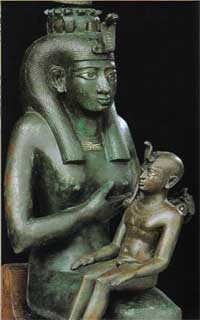
Isis
Shrines to Black Madonnas are famous for their notable healing powers. The statues and paintings of Black Virgins are believed to be wonder-making images. Votive images showing stories of miraculous healing are a frequent sight at all pilgrim destinations. The healing power comes from both the image and the place where it was found. For example, in Montserrat, Spain the monastery had to be constructed around the statue, which apparently refused to be moved. There are numerous stories, in which the Black Madonna obstinately refuses to be removed from her place. China Galland quotes Peter Lindegger, Swiss scholar and Tibet researcher, in her book,
“One cannot make the ground holy, it simply is. Knowing this, one culture would incorporate the sacred sites of the preceding cultures, building one temple over another temple or calling the same statue by a different name. If you didn’t do this, the people would worship there anyway.” (10)
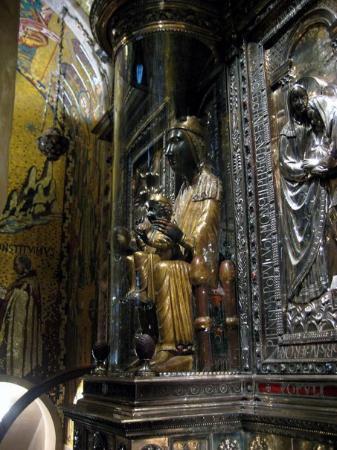
The Black Madonna of Montserrat
The symbolism of the Black Madonna is rich, virtually inexhaustible. Pagan revivalists, alchemists, hermeticists, Gnostics, Jungians, Buddhists, and plain Christians, all lay claim to her. China Galland quotes Gilles Quispel, author of The Secret Book of Revelation, who claims that the Black Madonna is the only living symbol of Christianity. What is more, “unless men and women alike become conscious of this primeval image of the Black Madonna and integrate it within themselves, humankind would be unable to resolve the problem of materialism, racism, women’s liberation, and all that they imply.”
The first wisdom brought by the Black Madonna is the wisdom of the body and its integrity. The dark mother has always sustained the physical processes of birth, death and rebirth. She helps to “break rigid masculine rules, ” writes Begg. She heals the sick and reveals the pangs of childbirth. She supports the equality of the sexes and liberation of women. She embodies the Biblical phrase “Love Thy Neighbour,” which was recently invoked in Poland when those who used her image, adorned with a rainbow, in the campaign against homophobia were persecuted by the conservative Catholics. She is also on the side of freedom in all things political. The Polish Black Madonna has long been associated with freedom and independence of the Polish state. She was the most fervently worshipped when Poland was under partitions, during the second world war and in the times of Communism.


The LGBT rendition of the venerated image
The second wisdom is connected with alchemy and the inner spiritual work. In The Mystery of The Cathedrals, Master Alchemist Fulcanelli wrote these words about the Black Madonnas:
“They represent in hermetic symbolism the virgin earth, which the artist must choose as the subject of his Great Work. It is first matter in mineral state, as it comes out of the ore-bearing strata, deeply buried under the rocky mass. It is, the texts tells us, ‘a heavy, brittle, friable black substance, which has the appearance of a stone and, like a stone, can shatter into minute fragments.’ Thus it appears to be the rule that the personified hieroglyph of this mineral possesses its special colour and that the subterranean parts of temples are reserved as its dwelling place.”
Ean Begg says that the Black Madonna is both the beginning (nigredo) and the end of the alchemical process:
“She is the ancient wisdom of Isis-Maat, the secret of eternal life that is the gold at the end of the alchemical process, as well as the initial blackness. In short, she is the spirit of evolutionary consciousness that lies hidden in matter.”
Thus the Black Virgin is the Gnostic Sophia, Goddess of Wisdom, hidden in matter, whose luminosity we seek in our own darkness and ignorance. Caitlin Matthews calls her the primal manifestation of the Divine Feminine. (11) Similarly, a renowned student of C.G. Jung, Erich Neumann, author of The Great Goddess, wrote:
“The Great Mother remains true to her essential and eternal darkness, in which she is the center of the mystery of existence.” (12)
The third and final wisdom is perhaps the most elusive and brings us back to Tara. Saxena beautifully describes the dark goddess as “pregnant nothingness.” She encompasses the whole cosmos, beyond space, beyond time. She is both empty and full, as the womb from which all forms arise. As can be read in The Heart Sutra, form is emptiness (shunyata), emptiness is form. But it is the emptiness, which is the mother and the ultimate essence of all phenomena. In her blackness all distinctions, all dualities, disappear. Her ultimate wisdom is the negation of separation, of anybody or anything existing separately. The whole material world pulsates with this luminous wisdom. China Galland, herself a practising Buddhist, concludes:
“This is darkness to the thinking mind, to the ego that grasps and holds that there is such a thing as ‘mine.’ This goes beyond thinking mind, beyond the world of appearances, into the vast direct experience of being. This is not ordinary reality. This is the black of starless midnight, imminence, that comes before the pre-dawn of enlightenment, the ‘clear light,’ a state of translucence or transparency that is beyond dark and light. This is a radiant black. …Thus emptiness can be said to be dark or black to us. This is the womb of enlightenment. This is Wisdom. This is the Mother of All the Buddhas, this is Tara.”
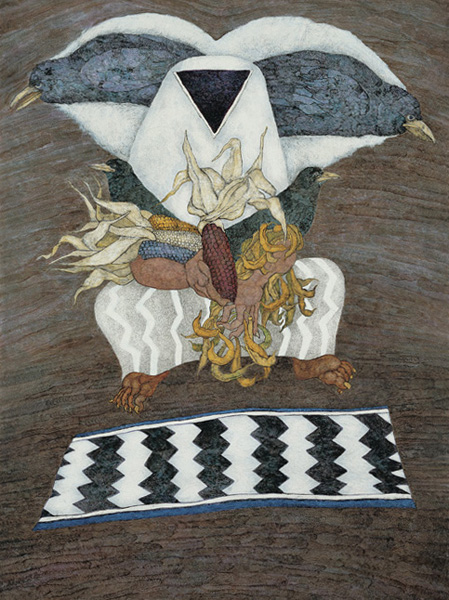
Meinrad Craighead, “Crow Mother Over the Rio Grande”

Support my blog
If you appreciate my writing, consider donating and make my day. Thank you in advance.
$1.00
Notes:
(1) Neela Bhattacharya Saxena, Absent Mother God of the West: A Kali Lover’s Journey into Christianity and Judaism
(2) China Galland, Longing for Darkness: Tara and the Black Madonna
(3) Ibid.
(4) Ean Begg, The Cult of the Black Virgin
(5) Ibid.
(6) Ibid.
(7) “In Quest of the Black Virgin: She is Black Because She Is Black,” by Leonard W. Moss and Stephen C. Cappannari, in: James J. Preston, ed., Mother Worship: Themes and Variations
(8) Ean Begg, The Cult of the Black Virgin
(9) Neela Bhattacharya Saxena, Absent Mother God of the West: A Kali Lover’s Journey into Christianity and Judaism
(10) China Galland, Longing for Darkness: Tara and the Black Madonna
(11) Caitlin Matthews, Sophia, Goddess of Wisdom, Bride of God
(12) China Galland, Longing for Darkness: Tara and the Black Madonna





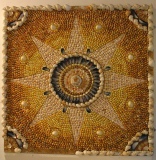




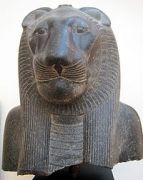




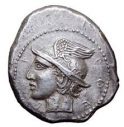
I loved this post so so much. I hear her loud and clear in my life in her different forms, thank you for sharing 💜
LikeLiked by 1 person
Thank you 💜 So do I
LikeLike
Wow! This is such an impressive post about the Black Madonna! Thank you Monika for sharing this (your) dazzling and revealing marriage of words and images with us. The depth of wisdom and insights offered about Her redemptive darkness will be helpful and healing for many readers I sense.
Today, I’ve returned for a second read because one cannot digest such richness in one sitting alone! Such a perfect post for the month of December and the dark cavern we find ourselves in. Thank you for enlightening us all in these cold, dark times! Warm & wild blessings, Deborah.
LikeLiked by 1 person
Dear Deborah, thank you from the bottom of my heart🙏 She keeps returning to me – I sense this is not the last time I’ve written about Her
LikeLike
Reblogged this on Have We Had Help? and commented:
Every now and again I come across something truly wonderful…
LikeLiked by 1 person
Thank you very much!
LikeLike
Pingback: Mystic Warrior Practice – Soul – Jessica Davidson
Pingback: Village: Resident Evil 8 – expanding lists of parallels and fine detail | @Beach69A
nice
LikeLike
I am teaching a seminar on the Black Goddess at the C. G. Jung Institute in Zurich. I will give the participants this article as a reference. Thank you so much. Beautifully written and illustrated.
LikeLiked by 1 person
Thank you – that’s an honour. If there is a public lecture, I might attend, as I live in the area. Once again, thank you.
LikeLike
Thank you so much for your most illuminating teaching, I will always come back again and again to read your wonderful piece, because one just cannot digest so much material and idea that you presented in one instance! I am reminded of the fact that through out history male chauvinism had again and again usurp the primal ascendancy of the female “Godhead”. In am referring particularly in Buddhism, both Tibetan and Eastern Mahayana school. The female Tara, Avalokistesvara, Quanyin, becomes a male Dalai Lama. While the Chinese and Japanese transform the Male form of Buddha of compassion to Quanyin to a female manifestation, as per the Buddhist imagery in Puto island in eastern China. The Buddhist holy island of Putoshan near Ningbo east China has large number of temples and shrines particularly dedicated to Quanyin the Buddhist God of Mercy both in male and female manifestation. Although the original thousand year old stature is said to be from the Five Peaks Holy Mountain of Shanxi (Ri Nga Chana) China definitely is a male representation.
Interestingly I also notice in the island there are temples where monks worship and venerate Quanyin in female form while nunneries next door worship the same deity in male form.
Sorry this has nothing to do with you digression on the black Madonna, something which I find particularly fascinating, maybe next time when I have more time we can get into the subject more deeply! The chauvinistic transformation of mystic dark female deity to light luminous male Godhead is a subject that need to be examine in great detail.
LikeLike
And I thank you for such an illuminating comment. I always regret not knowing more about the wisdom of the East. I am going to slowly mull over the information you have given here.
In gratitude
Monika
LikeLike